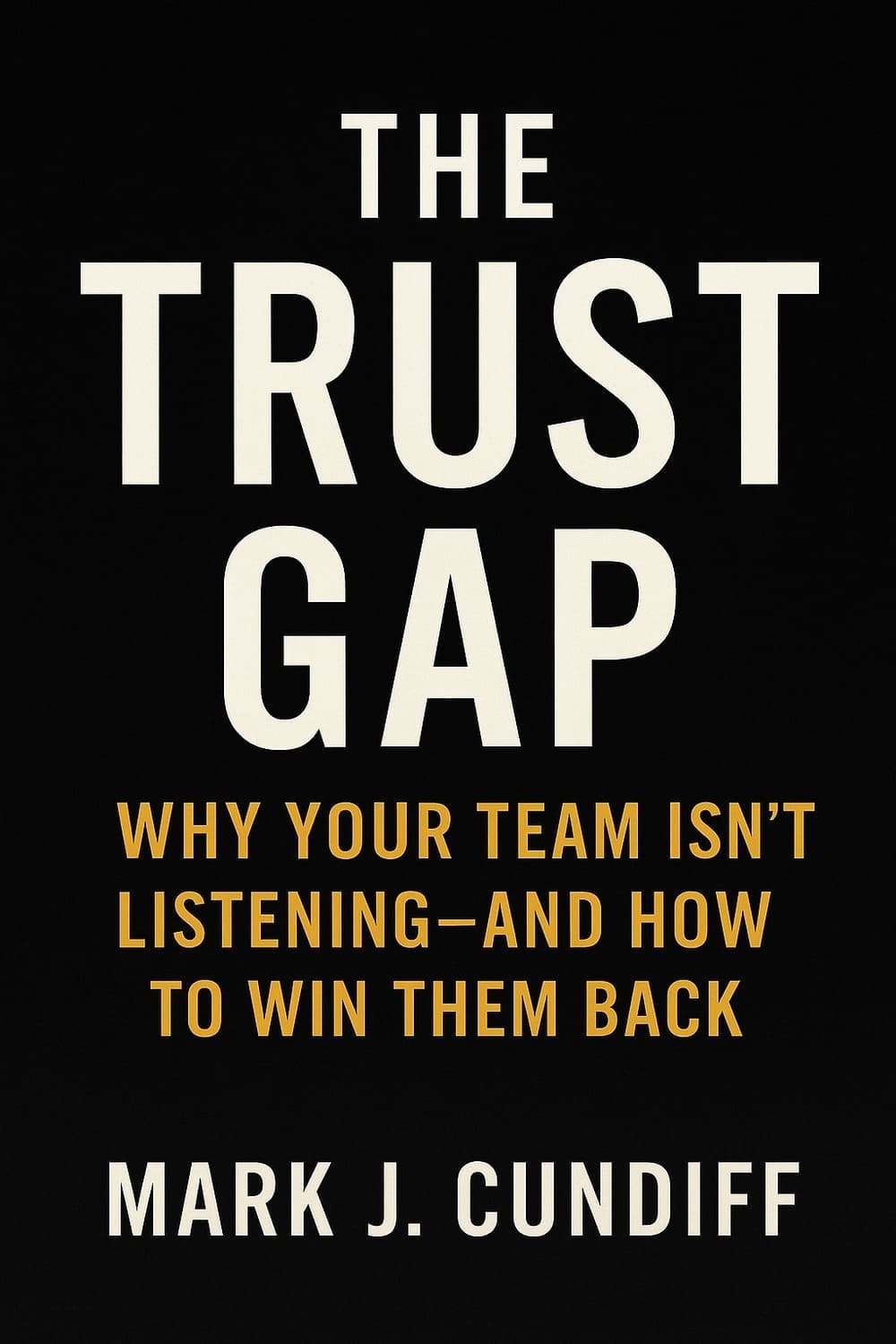Great Leaders Add Value To Those They Lead
Leadership Isn't About You—It's About Them: How Great Leaders Add Value to Others
John C. Maxwell said it best:
"To add value to others, one must first value others."
That simple truth is the foundation of good leadership. Whether you're in a senior leadership position or leading a small team, your role isn't about personal gain. It's about how you serve, support, and develop the lives of others.
This mindset is what separates great leaders from those merely holding a leadership role.
But here's the catch: Adding value isn't a one-time event. It's a daily commitment—an intentional choice to focus on others, not yourself.
Leadership expert Mark Sanborn, in his article "How Leaders Add Value to People," breaks this down into four powerful behaviors: Praise, Inspiration, Encouragement, and Service (P.I.E.S.). These are not fluff concepts. They're actionable, practical, and align perfectly with what the best leaders do every day.
The True Currency of Leadership: Adding Value
As Midge Pan observes in her compelling piece on leadership, "Value-adding is the true currency of leadership." By adding value to your team members, you build a stronger workforce. You're also creating advocates and allies who truly care about the shared mission.
True leadership impact isn't measured by your title or the size of your office. It's measured by how much better people become because of your influence.
How can you blend the timeless ideas of servant leadership with effective value-adding frameworks? Let's explore seven powerful ways you can add meaningful value to those you lead.
1. Be a Good Listener: Understand Before You Lead
In a world obsessed with speaking louder, good leadership begins with listening better.
When you actively listen, you:
Show respect for your team members.
Gain clarity on complex issues.
Strengthen relationships that build trust across your entire department.
Sanborn reminds us that one of the simplest yet most profound ways to add value is to truly see and hear people. Praise starts by paying attention. You can't celebrate good work if you're not tuned in enough to notice it.
Good leaders listen well. They know what motivates people, what annoys them, and what they can achieve in the future. This attentiveness is a vital leadership trait that reinforces the character of the leader.
As Midge Pan points out, "Employees want to be seen, heard, and valued." Listening with genuine interest shows that their thoughts and experiences are important. It shows that they matter.
Takeaway: Listening isn't passive—it's one of the most powerful ways to add value on a daily basis.
2. Empower Team Members: Build Ownership, Not Dependence
Effective leadership is not about doing it all yourself. It's about empowering others to own their growth and success.
The best leaders:
Set clear expectations.
Provide resources and mentoring.
Trust their teams to perform without constant oversight.
Sanborn's focus on Inspiration aligns perfectly here. He points out that inspiring others isn't about hype or motivational posters. It's about giving people a sense of purpose in their work.
When you empower, you're saying: "I believe in your future potential. I trust you with meaningful work."
That's where true leadership values show up—not in your leadership position, but in how you invest in others.
Midge Pan reinforces this, noting that "great leaders create more leaders, not followers." Your goal isn't to create dependency but to cultivate capability and confidence in your team members.
Takeaway: Empowerment adds value by creating better leaders, not just better employees.
3. Offer Praise and Recognition: Fuel Motivation with Sincerity
Too often, personal recognition is treated like an afterthought. But if you want a positive culture, you need to be intentional about it.
Sanborn emphasizes that Praise is one of the most overlooked leadership behaviors. People want to know their good work is seen, valued, and appreciated—not just at the end of the quarter, but regularly.
Great leaders recognize that:
What gets recognized gets repeated.
Praise should be specific and timely.
A culture of celebration lifts the morale of the entire organization.
Your willingness to offer praise in small, gracious ways builds the emotional bank account of your team. It's not about inflating egos—it's about affirming their contributions to the bigger mission.
Pan notes that "recognition is a fundamental human need." When you truly recognize someone's hard work or success, you're not just being kind. You're meeting a key need that boosts engagement and extra effort.
Takeaway: Recognition is leadership oxygen. Without it, engagement suffocates.
4. Model Desired Behavior: Be the Example They Want to Follow
At the end of the day, leadership is about influence, not authority.
Your team watches how you handle pressure, how you navigate challenges, and whether your actions align with your core values.
Sanborn's principle of Encouragement fits right here. Encouragement isn't just verbal—it's behavioral. When you face adversity with grace, perseverance, and humility, you encourage others to do the same.
Do you model a positive attitude when things go sideways?
Are you living out the leadership qualities you preach?
Are you demonstrating the desired behaviors you expect from others?
Remember: your leadership style shapes the character of the organization. Leading by example is still the best way to instill accountability, excellence, and integrity.
Pan reinforces this, observing that "people naturally follow those they admire and respect." Your consistent behaviors speak louder than your occasional speeches.
Takeaway: Don't expect what you're not willing to model.
5. Prioritize Service Over Self: Lead with a Development Mindset
Sanborn's final point is perhaps the most important: Service.
True leadership is never about personal gain. It's about serving the needs of others with humility and intentionality.
This is where servant leadership moves from concept to practice:
Anticipating what your team needs to succeed.
Removing obstacles.
Providing opportunities for growth.
Caring about the future potential of each person, not just the bottom line.
When you serve your team well, you create an environment where everyone can thrive. You're not just leading an entire department—you're shaping lives.
Midge Pan emphasizes that "the leader-first and the servant-first are two extreme types." Great leaders choose the servant-first approach, asking: "How can I serve?" rather than "How can I gain?"
Takeaway: The most successful leaders are the most servant-hearted leaders.
6. Invest in Continuous Growth: Be Their Champion
Building on Sanborn's and Pan's ideas, great leaders invest in their team's growth.
As a leader who adds value:
You identify hidden talents and potential that others might miss.
You create stretch opportunities that push people beyond their comfort zones.
You provide constructive feedback that's both challenging and encouraging.
You champion their development, even when it might mean they outgrow their current role.
Pan says that "great leaders see the oak in the acorn." They spot potential early and help it grow.
Putting someone's growth first shows you value them for who they are now and who they can be in the future.
Takeaway: Adding value means investing in people's futures, not just utilizing their present capabilities.
7. Create Meaningful Connections: Build Bridges, Not Silos
Both Sanborn and Pan emphasize the relational nature of leadership. Value-adding leaders don't just connect tasks to outcomes—they connect people to purpose and to each other.
As a leader who adds value:
You facilitate meaningful connections across teams and departments.
You help people see how their work contributes to larger organizational goals.
You create psychological safety where authentic relationships can flourish.
You build a community, not just a workforce.
Pan highlights that "great leaders create belonging." When people feel they truly belong, their engagement and commitment naturally increase.
Building these connections creates an environment where value flows in many ways. It moves not just from leader to team member, but also between team members and throughout the organization.
Takeaway: Adding value through connection creates a multiplier effect that extends far beyond your direct influence.
Final Thought: Leadership is Adding Value, One Day at a Time
Good leadership is not about power plays or personal glory. It's about lifting others up, creating a positive impact, and building a better way forward—one conversation, one decision, one moment at a time.
Mix John C. Maxwell's timeless principles with Mark Sanborn's P.I.E.S. framework and Midge Pan's ideas on value-adding leadership. Doing this helps you become a leader who creates lasting change.
As Sanborn wisely notes, "The essence of leadership is found in serving others, not servicing yourself." And as Pan reminds us, "The true value of a leader is measured by how much they add to others, not how much they add to themselves."
Because in the end, leadership is not about you. It's about them.
Call to Action:
What's one practical way you can add value to someone on your team today?
Start with Praise, offer Inspiration, give Encouragement, or choose an act of Service. It's not complicated—but it is powerful.
Commit to making value-adding a daily practice, not just an occasional event. Your team deserves nothing less than your best, most servant-hearted leadership.
Small actions. Big difference. Every day.
Join over 3,900 Fellow Leaders reading The Learning To Lead Newsletter each week!
Recent Articles

Join over 3,900 Fellow Leaders reading The Learning To Lead Newsletter each week!
©2025 Learning To Lead | Helping Good Leaders Become Great Leaders


